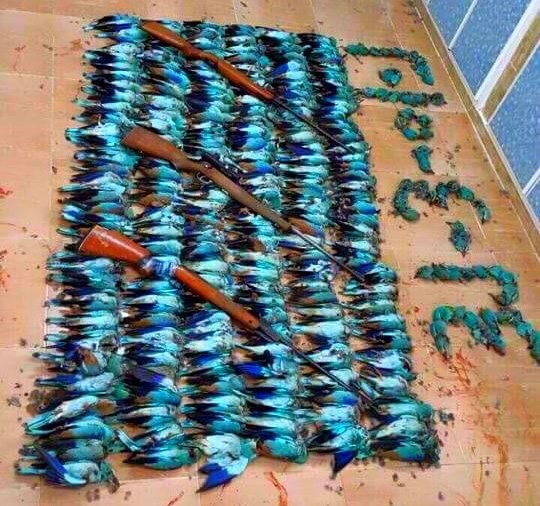Shocking scale of illegal bird killing in Middle East revealed
A new study released by BirdLife and the Ornithological Society of the Middle East (OSME) has for the first time revealed the shocking scale of illegal bird killing in the Arabian Peninsula, Iran and Iraq.
Drawing on local sources from across the region as well as expert knowledge, researchers estimate that at least 1.7 million birds from at least 413 species are illegally killed or taken each year. Combined with BirdLife's 2015 study on the Mediterranean, this means that a total of 17.5 million birds are illegally killed in the Middle East as a whole.
Several species of global conservation concern were on the list, including the Critically Endangered Sociable Lapwing. The primary reason for this illegal killing is for sport, but some species are also hunted for food, especially those considered a delicacy.
Worryingly, the figure is likely to be an underestimate, as data were unavailable for parts of the region. The highest figures were mean estimates of 1.7 million birds per year in part of Saudi Arabia and 800,000 birds in part of Iran, despite in both cases data only being available only for part of the country. Estimates of illegal killing and taking in Iraq and Yemen were also relatively high with 329,000 and 273,000 birds on average estimated to be illegally killed or taken each year.

It is sadly not unusual to see tens of Golden Orioles killed by hunting parties in a single day.
Illegal killing and taking poses a global threat to biodiversity and has attracted international attention. For example, in 2014 the Convention on the Conservation of Migratory Species of Wild Animals (CMS), to which most of the countries from this review are Parties, adopted a Resolution to prevent illegal killing, taking and trade of migratory birds in 2014 (UNEP/CMS 2014).
Ominously, in this latest study, several species of global conservation concern were illegally killed or taken, including Marbled Duck, Common Pochard and European Turtle Dove – all are classified by BirdLife International as Vulnerable on the global IUCN Red List. Of greater concern, Sociable Lapwing was also reported to be known or likely to be killed illegally each year in relatively high numbers relative to its small population size.
Illegal shooting and illegal trapping were the two most prevalent methods and birds were reported to be illegally killed or taken primarily for sport, but also for food, mainly as a delicacy. In several countries illegal killing and taking was widespread throughout the country, but for other countries particularly worse locations were identified.
These included the Caspian Sea coast in Iran and the mountainous Kurdistan region of Iraq, with more than 100,000 birds a year estimated to be illegally killed or taken in each location and waterbirds particularly affected. Both Iran and Iraq provide important staging and wintering areas for migratory birds, especially waterbirds, and high levels of take may be a factor driving population declines of waterbirds in the Central Asian flyway.

European Roller is a species in decline – when images such as this come to light, it's easy to see why.
Combining the results of the current study with those for other countries of the Middle East from a previous Mediterranean focused review of the issue led by BirdLife in 2015 paints a concerning picture for the Middle East region as a whole. A mean of 17.5 million birds (8.0-27.1 million birds) is estimated to be killed annually across the combined region, of which 18 per cent is in the (partially assessed) Arabian Peninsula, Iran and Iraq.
In five of the 17 Middle East countries assessed, no fewer than 1 million birds may be illegally killed on average each year. For the whole Middle East region (and neighbouring countries), the highest estimated numbers were in Egypt, Syria, Lebanon, Saudi Arabia and Iran.
The study also highlighted the paucity of data on illegal killing and taking of birds, and more generally on bird population sizes in the region; thus, the implementation of systematic monitoring of the numbers of birds illegally killed or taken there is a priority.

